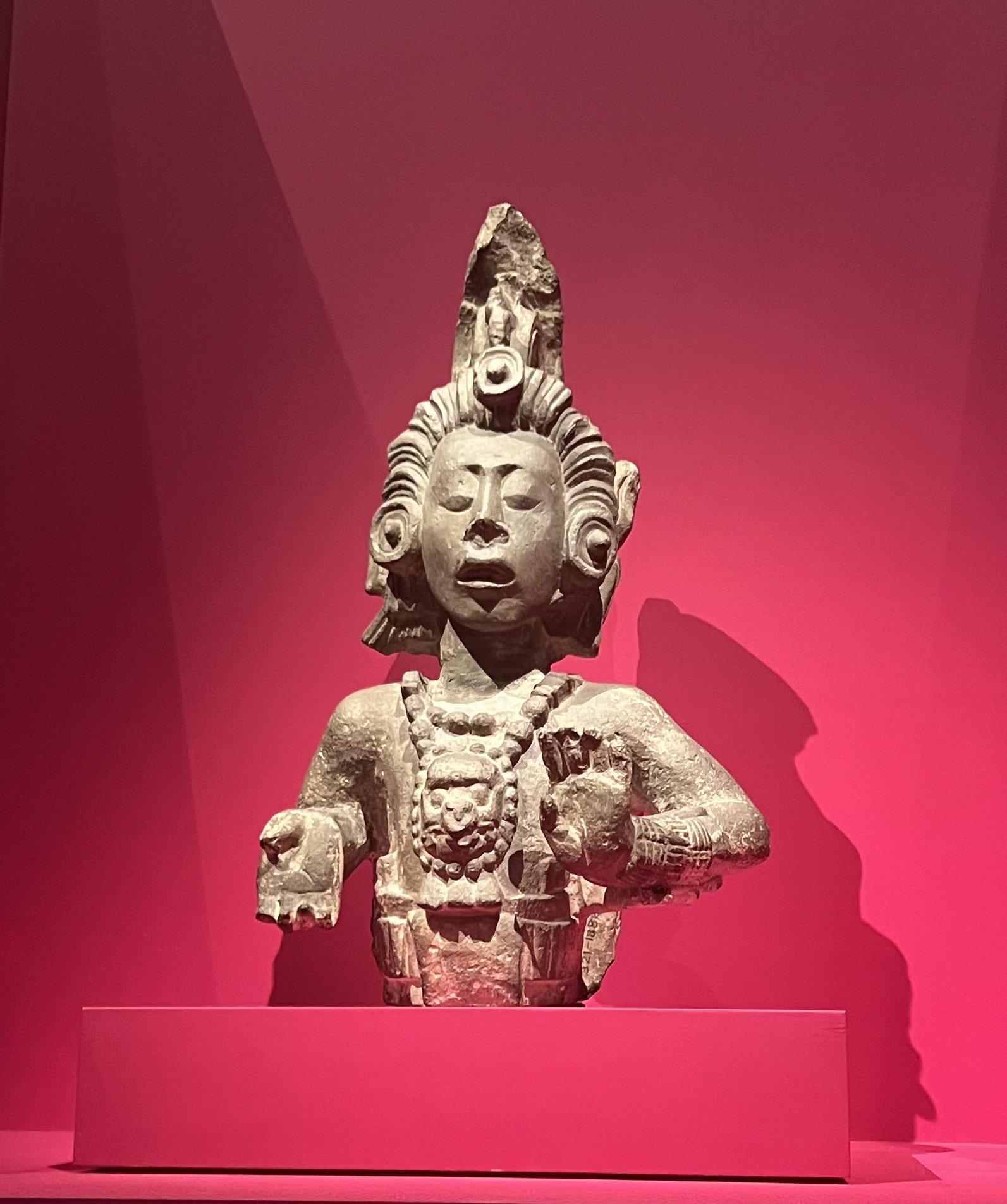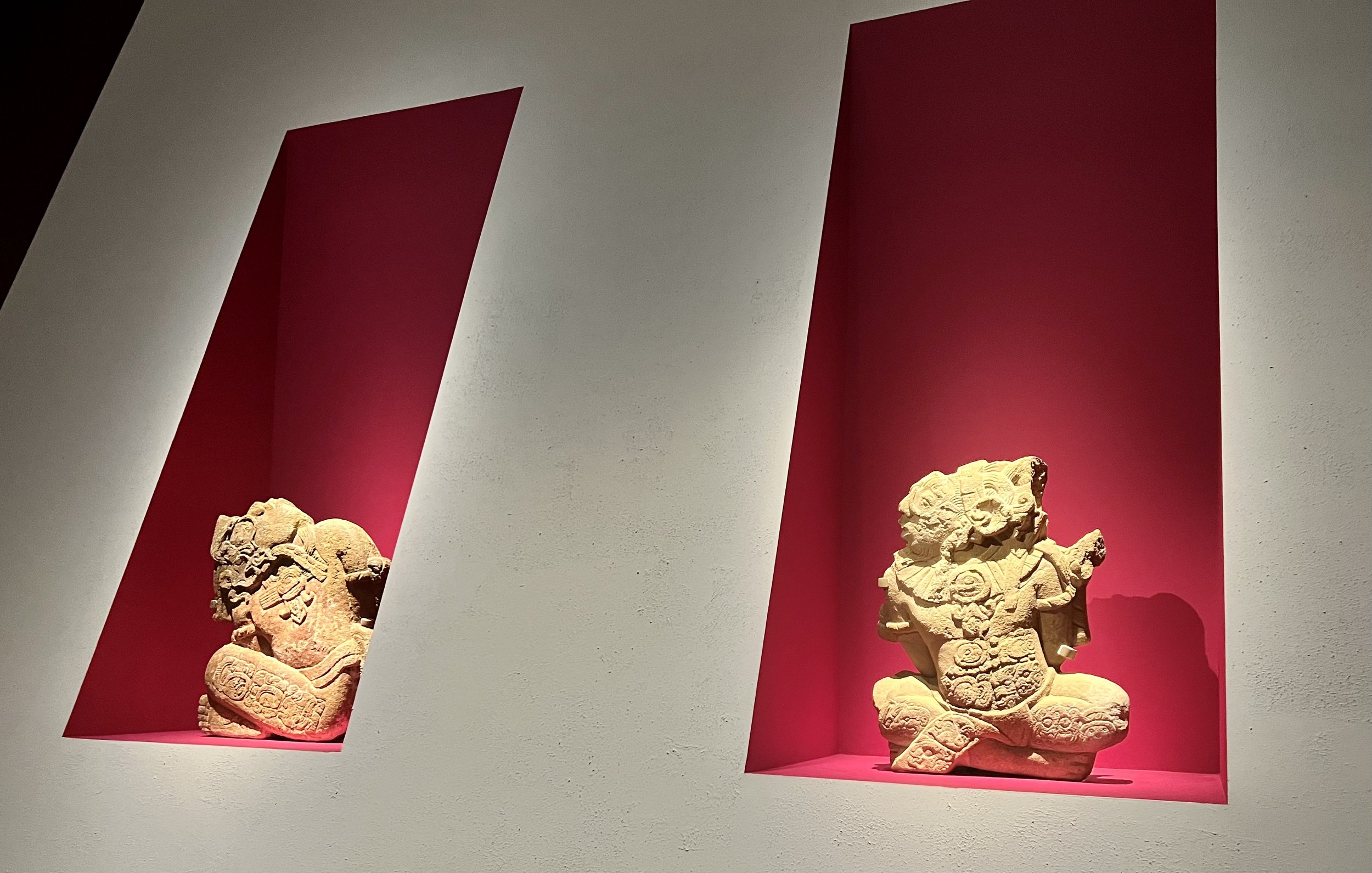Met Museum Explores ‘Lives Of The Gods’ In Classic Maya Society
NEW YORK— The Maya, Indigenous people native to the Yucatan peninsula and modern-day Guatemala, worshipped a pantheon of gods as a fundamental part of their daily life. They’re known in modern culture primarily for their calendar, which only a decade ago was used as justification for the unfounded belief in the violent end of the world.
Developments and collaboration with modern Maya people in the past few decades have allowed for further study of the culture’s history, particularly through advancements in linguistics.
“Lives of the Gods: Divinity in Maya Art,” a new exhibit on view at the Metropolitan Museum of Art in New York, explores Maya religion and in many ways celebrates this growing wealth of knowledge.
It focuses on the Classic period from 250 to 900 A.D., the height of Maya civilization and about 600 years before the Spanish began colonizing the region.
Society consisted of city-states that were often at war with each other spread across the region. They had little access to rivers for farming and drinking water, so instead devised irrigation systems using the lowlands and rain to grow maize.
The exhibit is organized according to four primary Maya gods: Day, Night, Rain and Maize. There are two additional sections acknowledging the patron gods of scribes and rulers, who were elevated and sometimes deified themselves.
The art and artifacts presented primarily offer information on Maya belief about the creation of the world and the gods themselves. Plenty of artifacts once used in religious rituals show how Maya people worshipped, and more still offer details about some intricacies of daily life: how they expressed violence against their enemies and what made them laugh.
“Lives of the Gods” doesn’t offer a full picture of Maya civilization or religion, though that’s rarely the result of any exhibit and not necessarily the museum’s burden to bear in this case. Even if it were, there’s still so much unknown about the Maya that presenting a clear-cut narrative for every facet of the civilization is currently impossible.
This creates a frustrating curiosity, as the exhibit raises questions with nonexistent answers. However, these shortcomings only present more opportunities — and hopefully more desire and support — to learn more.
Importance of Mayan languages
This exhibit is particularly refreshing in that it refrains from portraying the Maya as otherworldly and primitive. Instead, it invokes both a deep respect for Maya culture of the past and present and a deep reverence for the gods whose presence is embedded in that culture.
In particular, curators have taken special care to amplify traditional Mayan languages.
Early Maya scribes wrote in what scholars call Classic Mayan, and today, approximately 30 languages from the linguistic family are spoken by 6 million modern Maya. K’iche’ — spoken in Guatemala and other Maya diasporas — is instrumental in the preservation and translation of Maya texts, in part because of the historical and religious text “Popol Wuj.”
K’iche’ vocabulary is instrumental to the exhibit in this way.
In addition, linguist Romelia Mo speaks Poqomchi’, a close relative of K’iche’, in parts of the audio guide, and reads glyphs written in Classic Mayan.
Creation out of chaos
Creation as it’s described in the “Popol Wuj” and ancient hieroglyphs came alongside tumultuous natural disasters and conflict between higher beings whose hierarchies of power shifted with every story and every battle — similar in nature to the power rankings of competing rulers and city-states.
Celestial god Itzamnaaj is credited with the creation of the world and the invention of books and writing. He is most often depicted as an elderly man, though he often appears with avian features or fully transformed into the Principal Bird Deity.
A vessel meant specifically for drinking a luxury cacao drink depicts Itzamnaaj in a humorous setting, the equivalent of a short comic strip. The god is portrayed clinging to the back of a deer and a wild pig — though the Maya had no mounted animals at the time — and the “speech bubble” attributed to him suggests he’s searching for someone.
Oswaldo Chinchilla, consulting curator, explains in the audio guide that this scene would be related to a well-known story, so context was unnecessary.
“You know what he’s doing, because you have seen the movie or read the books, so you don’t need them to tell the whole story,” he said.
The handful of named gods that serve as focal points for this exhibit only scratch the surface of deities in the Maya pantheon, though the broad categories they’re presented in offer a full representation of the way the gods interacted with Maya life and the natural world.
Principal Maya gods
Unsurprisingly, the sun was at the forefront of life in Maya civilization, providing heat, light and energy that allowed people to grow crops and thrive. As such, the birth and rise of the sun god is crucial to their religion.
Stories describe a dark, miserable world at the beginning of time that was populated by monsters and a bird deity — who some believe overlaps with Itzamnaaj — who prevented the sun from rising. In a great battle, a powerful god defeated this bird and allowed days to begin.
Kings were associated with the sun, often believed to become new rising sun gods after their deaths. Many altered their appearances and changed their names to associate with the sun god.
As the day was full of warmth and life, night was a seductive and violent danger. Night deities were primarily depicted as jaguars or beautiful young women — jaguars being the nocturnal predators who prowled the forests surrounding Maya communities and moon goddesses that represented fertility and femininity.
Two prisoners depicted as jaguar gods are one representation of the violent nature of these deities and Maya society. They’re branded with their names and are contorted into painful positions. Curators note that these captives, likely taken in a war between communities, would later serve as a sacrifice to the gods in ritual burning.
That serves an even deeper mythological purpose, as Associate Curator Laura Filloy Nadal explains in the audio guide:
This jaguar god of the underworld suffered at the hands of others, and at the end, he was burned. So these two royal captives we have here were actually taken prisoners, and they were impersonating this jaguar god. And, at the end, they had the same tragic fate.
Maya practiced religious rituals with music, dance, food and drink, resin and the blood of enemies and themselves — all made as various offerings to the gods.
Modern ritual blends the past and present, a continuation of ancient religious tradition combined with elements of Catholicism.
“Dance of the Macaws,” a highlight of the exhibit, is one example. In the ritual, dancers enact a scene from ancient mythology that reinforces the importance of worshiping the gods and explains interpersonal relationships.
This story is told in various ways in ancient Maya texts — some of which are displayed in the exhibit — and many play a role in the creation narrative, invoking the new life the moon goddess provides.
Other gods worshipped by the Maya are directly correlated to agriculture, a fundamental part of society.
The Maya had little access to water for drinking and farming and had to engineer ways to ration it, and they were faced often with mighty storms: as such, the rain god Chahk is both flighty and powerful.
Maize, the Maya’s primary harvest, relied on water, sun and proper farming techniques in order to grow. Ancient creation myth also said that the gods created humans out of maize, making the substance a particularly sacred thing. In line with both personas, the maize god is a beautiful young man who is also extremely fussy and demanding.
By way of these direct correlations, it was simple to deify every aspect of Maya life. Science, writing and other academic disciplines were extremely important, rendering scribes worthy of their own patron god — a howler monkey — and an elevated position in society.
As rulers were responsible for tending to the gods, looking over their people and leading wars against others, they were elevated in life to have the ability to speak to the gods and usually deified after death.
“Lives of the Gods” presents Maya life as something richly interwoven with nature, grounded in humanity and inextricable from religion.
It’s magnificent, and it’s certainly worth exploring.
“Lives of the Gods: Divinity in Maya Art” is on view at the Metropolitan Museum of Art now until April 2, 2023.
Jillian Cheney is a contributing culture writer for Religion Unplugged. She also writes on American Protestantism and evangelical Christianity and was Religion Unplugged’s 2020-21 Poynter-Koch fellow. You can find her on Twitter @_jilliancheney.



